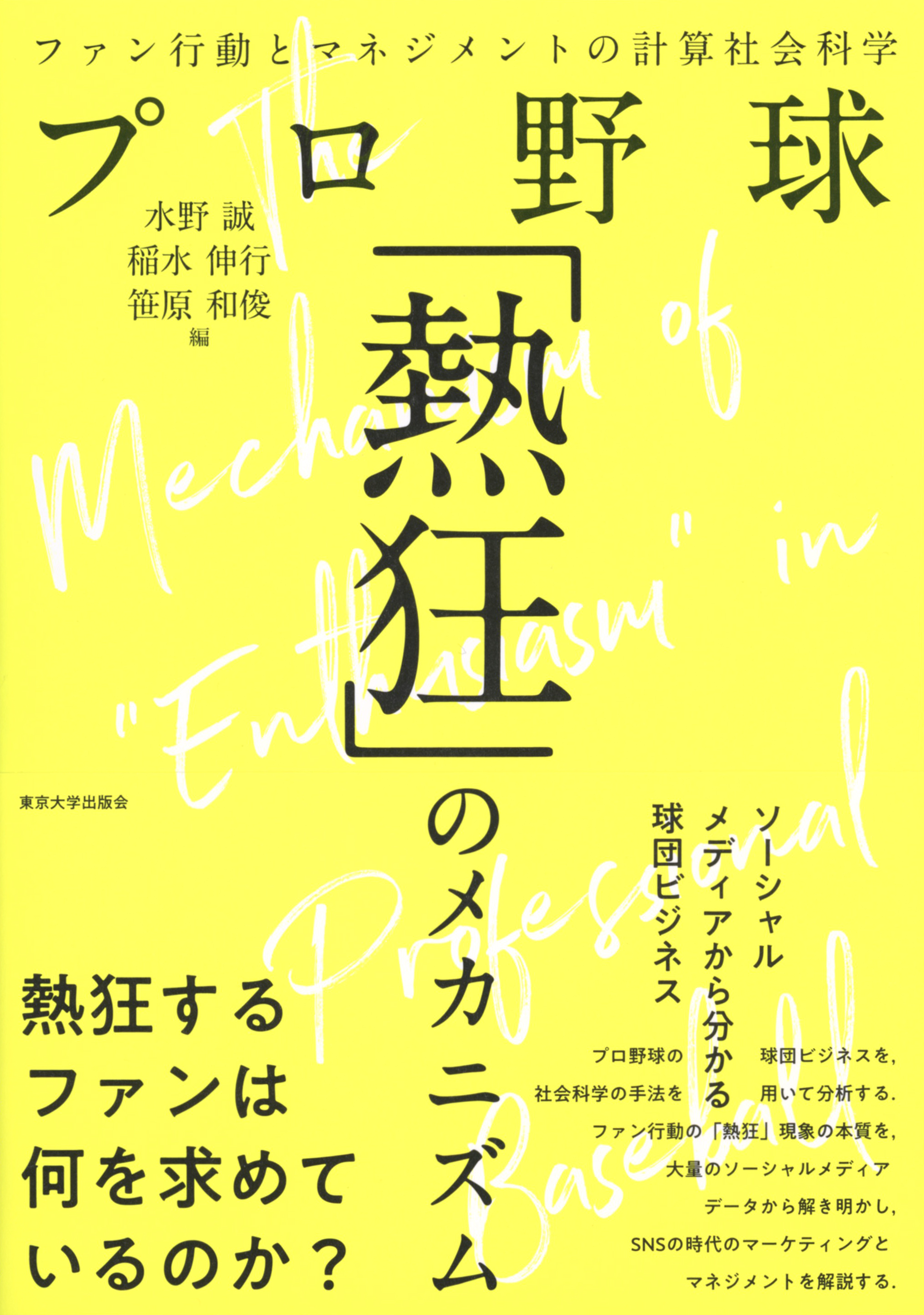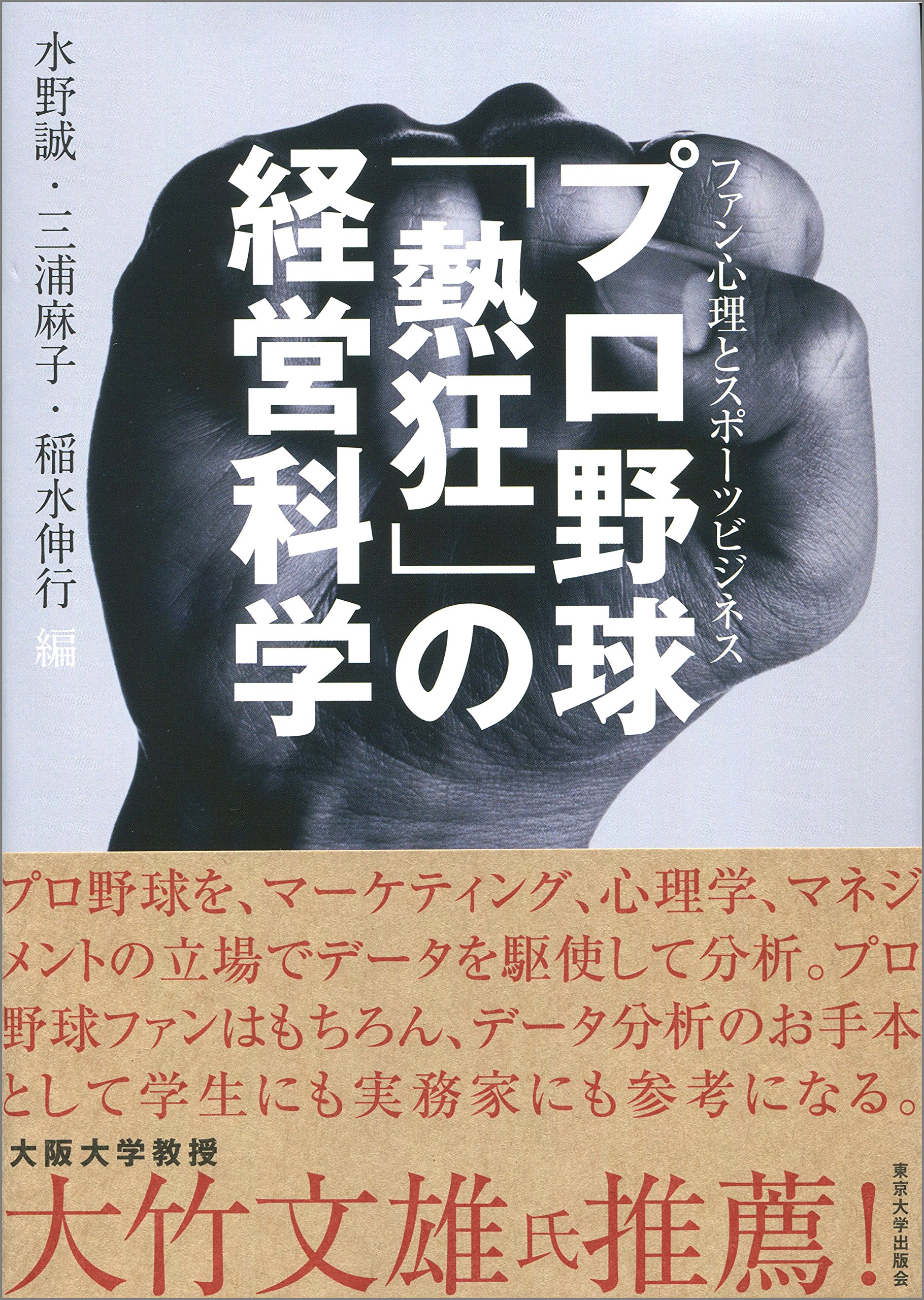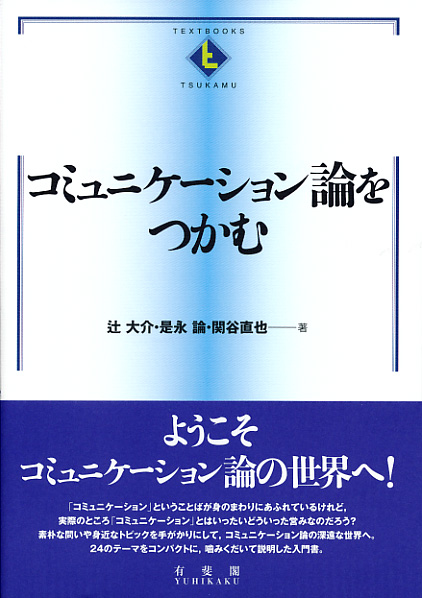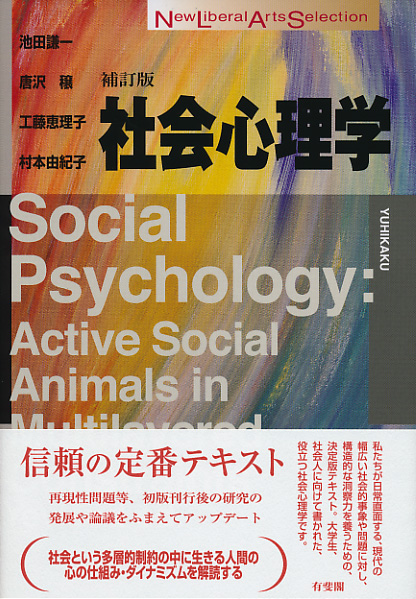
Title
Pro-Yakyu “Nekkyo” no Mechanism (The Mechanisms of “Enthusiasm” in Professional Baseball - Computational Social Science of Fan Behavior and Management)
Size
178 pages, A5 format
Language
Japanese
Released
August 30, 2021
ISBN
978-4-13-040303-0
Published by
University of Tokyo Press
Book Info
See Book Availability at Library
Japanese Page
Enthusiasm is a ubiquitous and surprisingly familiar concept. There are countless examples: the Kimetsu no Yaiba (Demon Slayer) manga boom, Trump’s “fake news” phenomenon, the terms “engagement” and “burnout” that are often talked about in the business field, and followers of strong brands such as Apple. These examples also show that “enthusiasm” is a fascinating theme for the interdisciplinary exploration of common mechanisms that underlie various social phenomena.
This book, as a starting point, analyzes the “enthusiasm” phenomenon in Japanese professional baseball from various angles. In particular, this book is characterized by relatively large-scale online experiments, analysis of large amounts of social media data, and agent-based simulation research. Quantitative research on humans and society that uses these three methodologies has recently been called “computational social science” and has been attracting attention.
In Chapter 1, carefully designed experiments show that fans collectively have behavioral characteristics called “in-group favoritism” from the perspective of social psychology. Readers should first understand that fan groups tend to favor the in-group and strengthen identification with the team as the psychological basis of enthusiasm.
In Chapter 2, big data from Twitter are used to focus on real-time and dynamic aspects of the generation and spread of enthusiasm. Findings showed that tweets were associated with closer games and that bursts that occur during games were associated with positive fan empathy. The chapter also discusses how the spread of tweets that accompany enthusiasm can be divided into a top-down type centered on official accounts and a bottom-up type by enthusiastic fans.
In Chapter 3, the data that were used in the previous chapter were analyzed from a different angle. The positive and negative emotions of fans were measured based on tweets using an emotion–word dictionary. Furthermore, an index that expresses the degree of fan enthusiasm was investigated by incorporating the frequency of tweets and the number of words used. The analysis results showed that winning the latest game as well as increasing the number of games over .500 fuels enthusiasm.
In Chapter 4, previous research that explored the factors that would generate fan enthusiasm was organized according to the issues of team competitiveness, presence of fascinating players, service experiences for fans, interactions between fans, and balance of strengths among teams. Research on how fan enthusiasm affects fan consumption activities, judgment bias, violence, and happiness is also discussed.
In Chapter 5, an agent-based simulation was used to investigate how to create the strongest team, given that fan enthusiasm is ascribable to the strength of the team. These results were confirmed by the player data from the Central League of Japan, which showed that even if there were many young players, extremely favorable results could be achieved if the proficiency of the team is improved by playing games with fixed members for a certain period. Meanwhile, it has been suggested in those cases that the team record may deteriorate drastically as members of the roster age, and these results provide material for thinking about how to build a team.
Those who are interested in various phenomena related to enthusiasm are encouraged to read this book regardless of their respective areas and fields.
(Written by INAMIZU Nobuyuki, Associate Professor, Graduate School of Economics / 2022)



 Find a book
Find a book


 eBook
eBook



